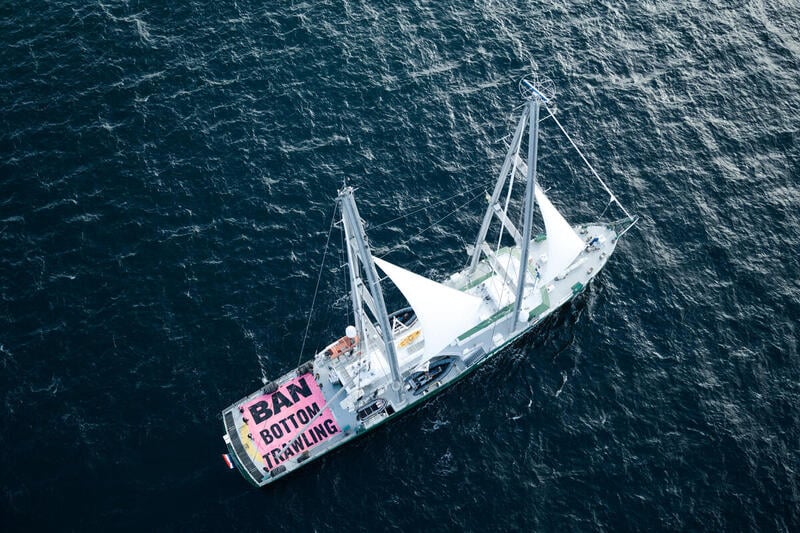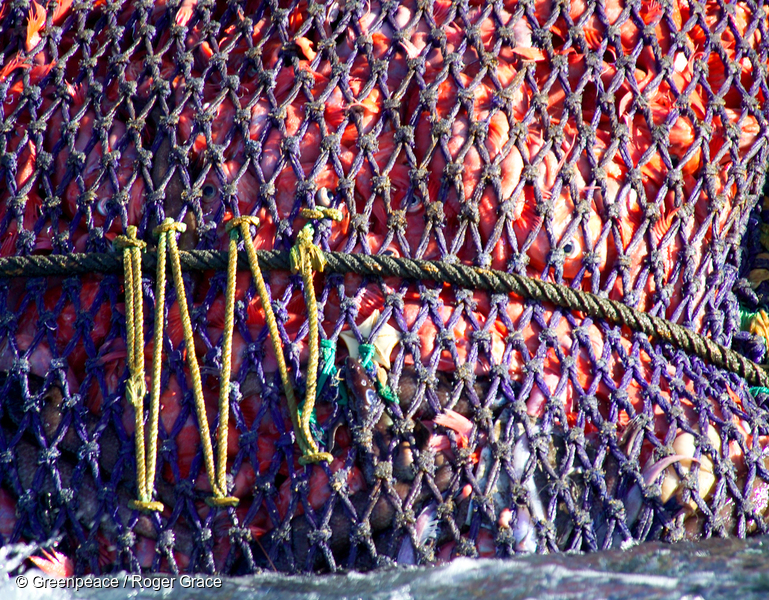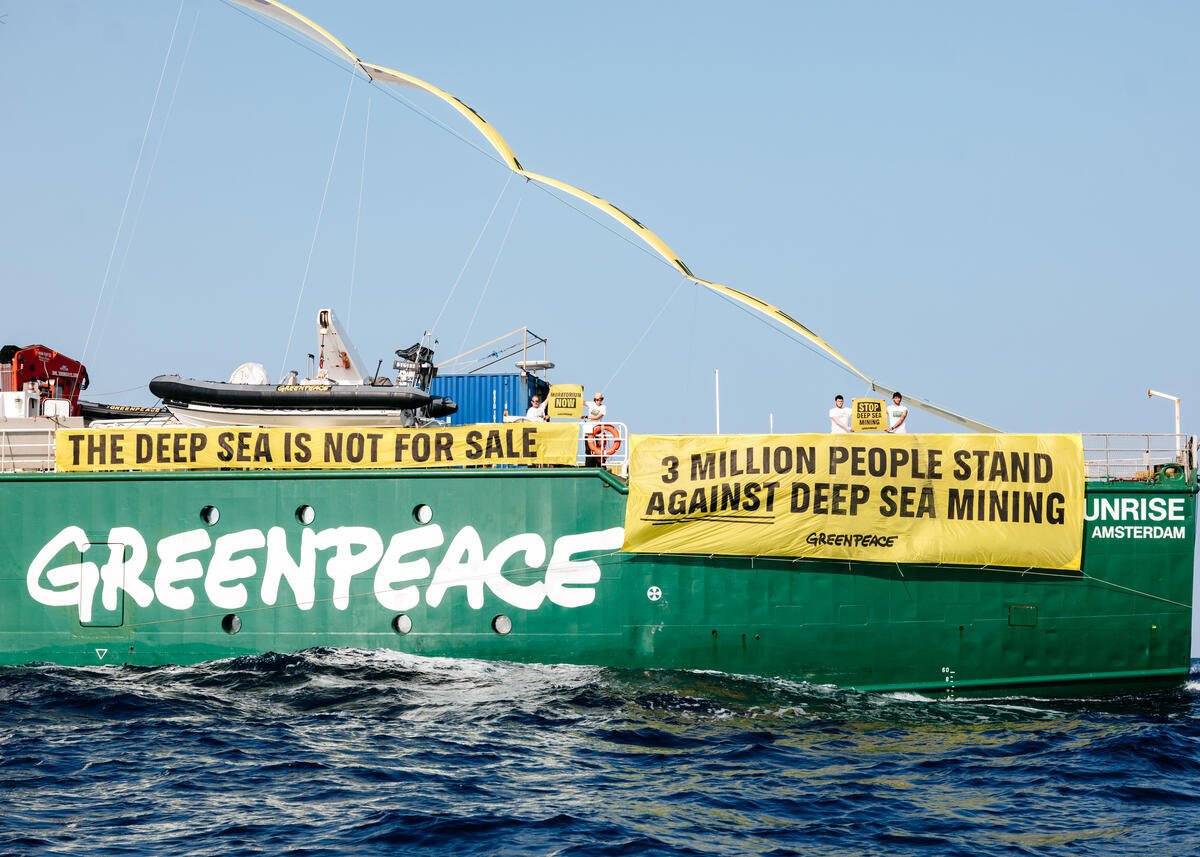Greenpeace is calling for a full and independent inquiry into New Zealand’s Fisheries Management System after releasing a leaked internal Government report showing “shocking” levels of malfeasance in the hoki fishery.
The leaked report was produced by the compliance division of the Ministry of Fisheries in 2012, and reveals widespread fish dumping and under-reporting in the deepwater hoki fishery in New Zealand.
Greenpeace Executive Director, Dr Russel Norman, says the report is profoundly at odds with public material about fishing industry practises that have been released by the Ministry for Primary Industries (MPI), into which the Ministry of Fisheries was merged.
“This report is shocking. It lists a multitude of ways that Fisheries Officers found that fishing companies were seriously under-reporting catches – we’re talking thousands and thousands of tonnes of hoki that has been made to disappear,” he says.
In just one example, Talley’s system of reporting the weight of cartons of fish was described as unlawful by the report, and it was estimated that if this system was applied to all Talley’s hoki fishery, it would result in under-reporting of 780 tonnes a hoki in one season. Carton weight discrepancies also led the authors to conclude that Sanford had under-reported hoki catch by 90 tonnes in a monthly return.
“What it meant was that far more fish were being caught than were being reported under New Zealand’s Quota Management System, resulting in millions of dollars in savings for fishing companies as they didn’t need to purchase quota for the disappeared fish. It also meant that no-one really knew how much fish was being taken,” Norman says.
“MPI and the fishing industry have told us that the deepwater fishery was well regulated and managed. They told us that the widespread fish dumping that Greenpeace revealed previously in the inshore fishery was not occurring in the large scale industrial deepwater fishery involving the biggest fishing companies in New Zealand. This leaked report shows that the problems of under-reporting and fish dumping in the deepwater fishery is simply a larger scale version of what happens in the inshore fishery.”
MPI had earlier, under the Official Information Act, released an 11 page version of the leaked 141 page report that left out all the important parts, including the critical 45 recommendations made by the compliance team.
Norman says given past experience with MPI, it’s doubtful that many of these recommendations were ever implemented.
“Where are the resulting prosecutions and enforcement actions that resulted from this huge compliance operation?” he says.
“MPI is captured by the fishing industry. We need an independent public inquiry into the fisheries management system and its regulator. But MPI and the seafood industry are trying to prevent this independent inquiry and are instead pushing for an internal review. This leaked report shows why that must not happen.
“MPI simply cannot be trusted to tell the truth or regulate the industry. Just last year when they didn’t prosecute anyone after their own video cameras exposed widespread fish dumping in the inshore fishery, MPI claimed the decision not to prosecute was due to legal advice. But it turned out that legal advice did not exist. MPI simply didn’t tell the truth.”
“As the report itself says, when the Ministry of Fisheries set catch levels for hoki, they claimed there was no reliable estimate of the level of dumping. However, this had in fact already been produced by Ministry scientists.”
ENDS
For more info:
Russel Norman, Greenpeace Executive Director, 027 458 5181
Nick Young, Head of Communications, 021 707 727
Some notes from “2011 Compliance Risk Profile of the West Coast/East Coast South Island Hoki Fisheries” (dated March 21, 2012) by the Ministry of Fisheries Compliance and Response Branch.
Full report can be found here: http://greenpeace.nz/fz92p6
This report was based on three operations carried out by the investigations team at Ministry of Fisheries: Operation Mini (2004), Operation Maxi (2005) and Operation Bronto (2011). All three operations found broadly similar results. Operation Bronto was the biggest of the three and involved the use of New Zealand naval vessels to board fishing vessels at sea as well as intercepting fishing vessels as they landed their catch and other investigatory techniques.
Key findings include:
- Talleys were operating a system of weighing cartons of fish that could result in 780 tonnes of hoki being under-reported in a single season [p.34]. The Fisheries Officers believed that this system was unlawful and Talleys should be directed to stop this practice [p.89].
- The report found that a Sanford manager removed a computer that recorded daily catch and processing records from a vessel before Fisheries Officers could examine it, compromising the inspection [p.22].
- Large discrepancies between the carton weights checked by Fisheries officers versus those reported by fishing companies meant that around 280 tonnes of hoki was not reported in monthly returns. Of the under-reported hoki, 90 tonnes was by Sanford, Amaltal under-reported 59 tonnes, and Independent 49 tonnes [p.40].
- The official mandatory estimated catch forms were routinely filled out after the catch was processed, so there was ample opportunity to misreport the original catch [p.20].
- NZ and Ukrainian vessels were not completing daily onboard processing forms according to Govt guidelines so it was very difficult for Fisheries Officers to reconcile catch records against processing records [p.21].
- For those ships that turn whole fish into filleted fish at sea, the conversion factor used by fishing companies to convert weight of processed fillets into weight of fish caught (and hence quota needed) resulted in two Sanford vessels under-reporting catch of up to 343 tonnes of hoki and three Amaltal vessels under-reporting 592 tonnes [p.49].
- When observing actual filleting process on one Amaltal vessel, Fisheries Officers found that conversion factors were wrong resulting in 9% underreporting of fish caught [p.48].
- Vessels with mealing machines reported less whole Hoki when there were no observers on board. There was probably around 2000 tonnes of under-reported whole hoki, which was turned into fish meal [p.63].
- Based on the length of fish reported versus length of fish expected, there was 1541 tonnes of small fish illegally dumped in the West Coast hoki fishery [p.61].
- There was a large amount of dumping of ling, as revealed by too many heads for the number of bodies [p.66].
There was evidence of misreporting of both quota and non quota species [p.66]. Expected catch of 1221t of Hake but only reported 500t or about 43% of expected catch was reported [p.67]. Reporting of shark catch is chaotic [p.69]. Scabbardfish was probably being used fraudulently to cover the mealing or discarding of frostfish [p.70]. Rose dory and Silver dory were probably being used fraudulently to cover the mealing or discarding of lookdown dory [p.70]. Eel bycatch was hardly reported at all [p.70]. - In the East Coast hoki fishery, they were supposed to avoid Hoki Management Areas where there were large numbers of juvenile hoki but instead were targeting them and saying they were after other species. One observer’s report about Sanford’s San Discovery: “In the observers opinion the vessel was misreporting the target species in order to circumvent the [rules] in order to target juvenile hoki. This practice is widespread throughout the domestic and foreign charter fleet” [p.82]
- “Vessels are consistently fishing areas where small hoki cannot be avoided; Some vessels are not landing as much hoki as could be expected; significant quantities of small hoki are being illegally discarded” [p.86].




